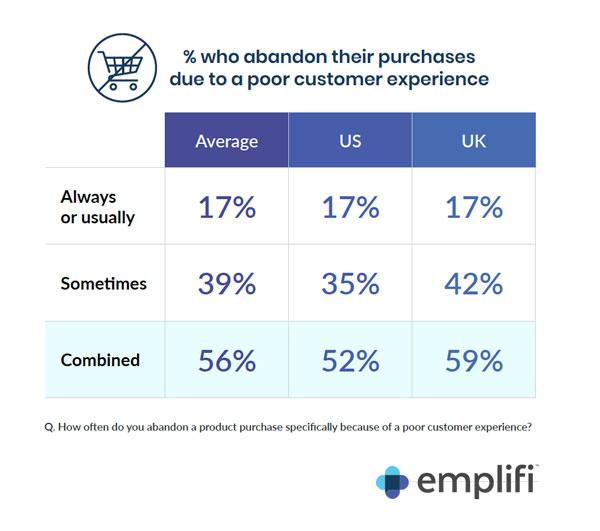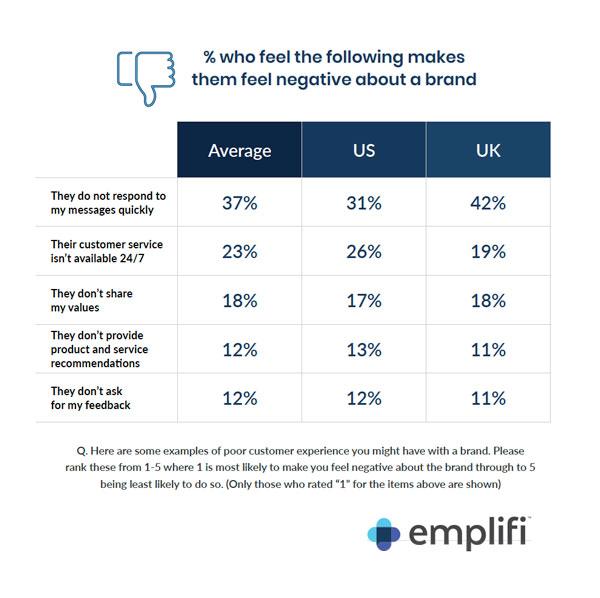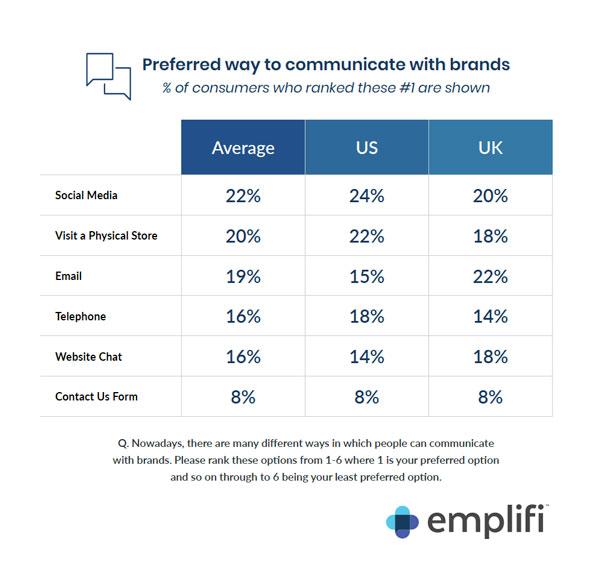Outstanding customer experience (CX) begins with understanding the customer’s perspective. Put yourself in your customer’s shoes. What kinds of interactions matter most to them? How do their experiences impact their brand relationships? And how can a single experience, good or bad, potentially affect your bottom line?
To answer these questions, Emplifi commissioned Harris Interactive to survey over 1,000 US and UK consumers in both markets to gain in-depth insights around expectations and sentiment. Emplifi's report, 11 key things consumers expect from their brand experiences today, provides a data-driven view of how CX influences consumers’ attitudes and behavior in two of the world’s largest markets.
In the report, we examine the effect of strong or weak CX on purchase decisions, brand perceptions, and more. We also break down the impact of specific aspects of CX, including response speed, 24/7 customer service, self-serve customer care, and social media. Along the way, our analysis explores the similarities and differences between consumers in the US and UK markets.
Read on for a few key insights from the report to help you craft your CX strategy and improve your customer relationships. To discover more, download your free copy of Emplifi’s report, 11 key things consumers expect from their brand experiences today.
Over half of consumers are likely to abandon a purchase because of poor CX
In both countries, over 50% of shoppers are likely to abandon a purchase if they don't feel they are getting a good brand experience, with almost 1 in 5 saying they always or usually do so.

This tells us that CX has a direct and significant impact on how often customers complete their purchases online; through websites or social shops. To combat this issue, and increase completed purchase rates, brands may want to invest in CX improvements that directly affect the purchase process, such as stronger in-purchase support and faster checkout.
UK consumers are even more frustrated by slow response times than US consumers
In both markets, when asked to rate a number of CX examples in terms of how likely it would make them feel negative about a brand, slow response times were most likely to evoke stronger negative feelings. Notably, UK consumers have a stronger reaction to slower response times than US consumers do (42% vs. 31%, respectively).

In the US, opinion is more evenly divided between slow response times (31%) and lack of 24/7 customer service availability (26%), whereas there is a notably larger gap between these two criteria among UK consumers (42% vs. 19%). This highlights a clear need to continuously explore ways to minimize both of these areas to help ensure positive sentiment towards their brand.
US consumers prefer to communicate with brands using social media, while UK consumers prefer email
Social media is one of US consumers’ favorite places to communicate with brands. UK consumers, on the other hand, had a slightly larger preference for email, with 22% of consumers ranking it as their preferred channel. This is notably different from the US, where email trailed at #4 on the list.

Consumers in both markets seem to agree that they prefer channels that provide more direct, personal interactions with brands. Perhaps website contact forms rank lowest because they are seen as more impersonal.
























